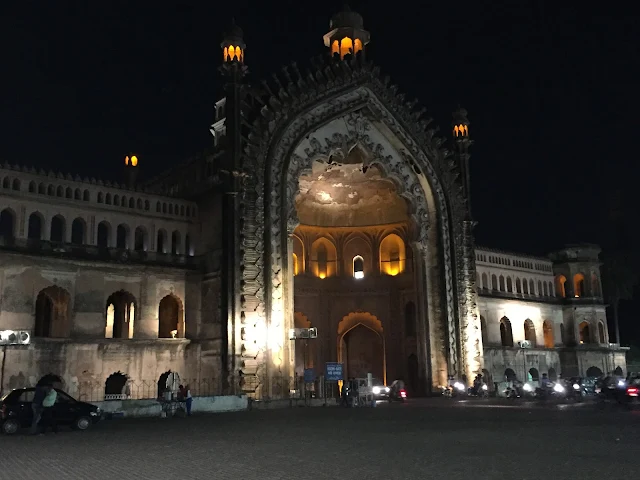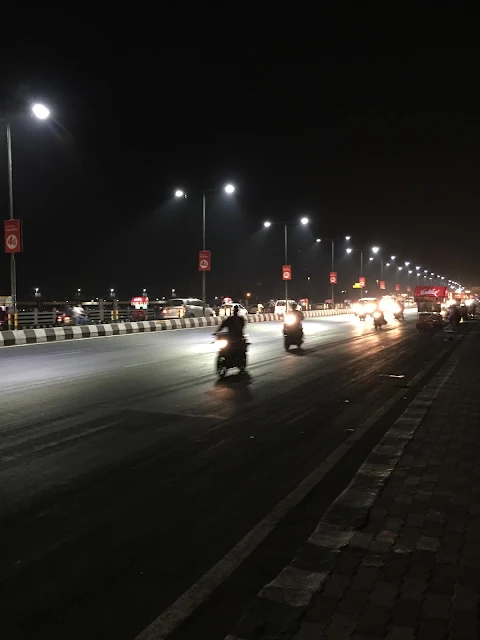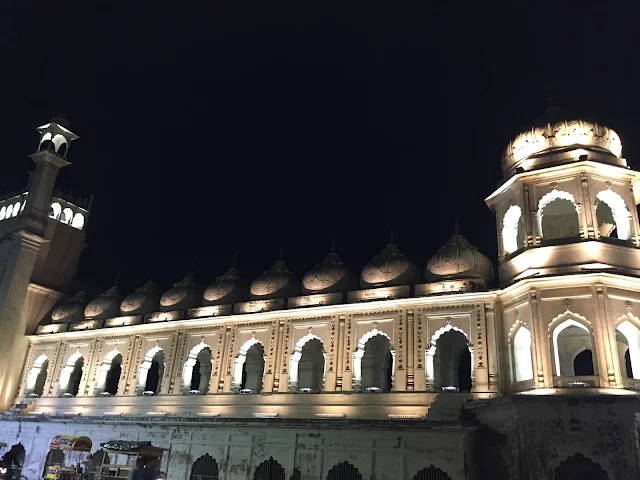The thing about Lucknow that fascinates me is how the Lucknowites keeps alive their past history despite the pressures from external forces, namely the political leaders, who are hellbent on re-writing the nation's history to fit into their political agenda. With the heightened inclusiveness and fear of domination around the world, it is indeed enlightening to learn that people here relish upon their past. They must be thinking that to go forward in life, one should not forget where one has come from. Our future is determined by our history. If we do not remember where we came from, how are we going to know where are we heading to? History teaches us to avoid mistakes that Man had made as history has that bad habit of repeating itself.
When we look around, Lucknowites accept the differences in people. They appreciate the fact that their not so distant past had been different than today, somewhat unfathomable by the government of the day. Just like in many regions in the world, given a chance, the leaders would jump at the idea of re-writing history as deemed fit to fit into their narration.
The general public is least bothered of which is the correct path to salvation. All that they really really want is peace of mind, to survive, to care for their ones and to meet their biological needs. True, we are social animals, but animals are also known to respect each other's boundaries and have learnt to live with mutual acknowledgement of the other. Have we transgressed? Zigazig-ah?
When we look around, Lucknowites accept the differences in people. They appreciate the fact that their not so distant past had been different than today, somewhat unfathomable by the government of the day. Just like in many regions in the world, given a chance, the leaders would jump at the idea of re-writing history as deemed fit to fit into their narration.
The general public is least bothered of which is the correct path to salvation. All that they really really want is peace of mind, to survive, to care for their ones and to meet their biological needs. True, we are social animals, but animals are also known to respect each other's boundaries and have learnt to live with mutual acknowledgement of the other. Have we transgressed? Zigazig-ah?
 |
| The Launch of the book '2017 Best Asian Short Stories' in Shri Ramswaroop Memorial University, Lucknow @ 8.4.2018 |
 |
| Asfi Mosque in the sunset |
 |
| Yet another view of Asfi Mosque. |
 |
| Asfi Mosque Dome |
 |
| And another, too fabulous to resist! |
 |
| Frontal view of Bara Imambara complex |

These passageways bear witness to the many turmoils and shenanigans created by Man in the name of nationalism, race, power, wealth, greed and wanting to dominate. Its secrets are lost in the annals of time. Who says the truth will slowly but surely prevail. Time and tide wait for no Man. We just hoodwink ourselves of the wheel of justice will correct injustices. Perhaps the spokes of its wheel are too large. Changes may occur only after a lifetime.
 |
The interior of the Nawab
Castle which also became a
dargah, a Shia shrine to
commemorate a Saint.
The curved ceiling is made
of clay honey, moong dhal,
chickpeas and other
mucilaginous emulsifiers.
|
 |
The Stairway to the harem.
In its heydays, there used to
be a bathing pond for the beauties.
Upon the water also reflected the image of the castle.
|
 |
| It is said to be an engineering and architectural marvel superior to Taj Mahal, but like a stepchild gets none of the deserved attention. |
 |
The Rumi Darwaza. An imposing gateway modelled after a similiar structure in Turkey.
|
 |
It is the night that our senses are heightened. Lurking shadows, however, conceal ugliness and alter judgement.
|
 |
| Memorial in Residency |
 |
| The Compound |
 |
| Jhansi Rani |
 |
| The Ruins, building not spirit! |
What is Culture without Food? Food to the soul is not possible on a hungry stomach! Mental stimulation begins with gustatory stimulation!
 |
| Vegetarian Lucknow Cuisine |
 |
| Chicken Tandoori (Mughal) |
 |
Thunde Kebab Mutton, Romali
Roti, Chicken Afghani.
|
Chikan is a traditional fine embroidery that is specific to Lucknow. It is said to have been inspired by Nur Jahan, the wife of the Mughal Emperor Jahangir.


 |
| Lucknow after dark. Traffic over River Gomthi |
 |
| The skyline and its silhouette over River Gomathi |
This work is licensed under a Creative Commons Attribution 4.0 International License.









No comments:
Post a Comment